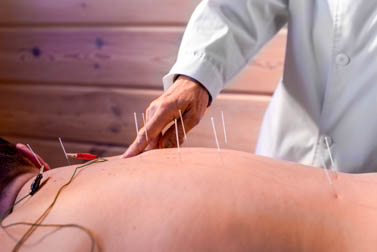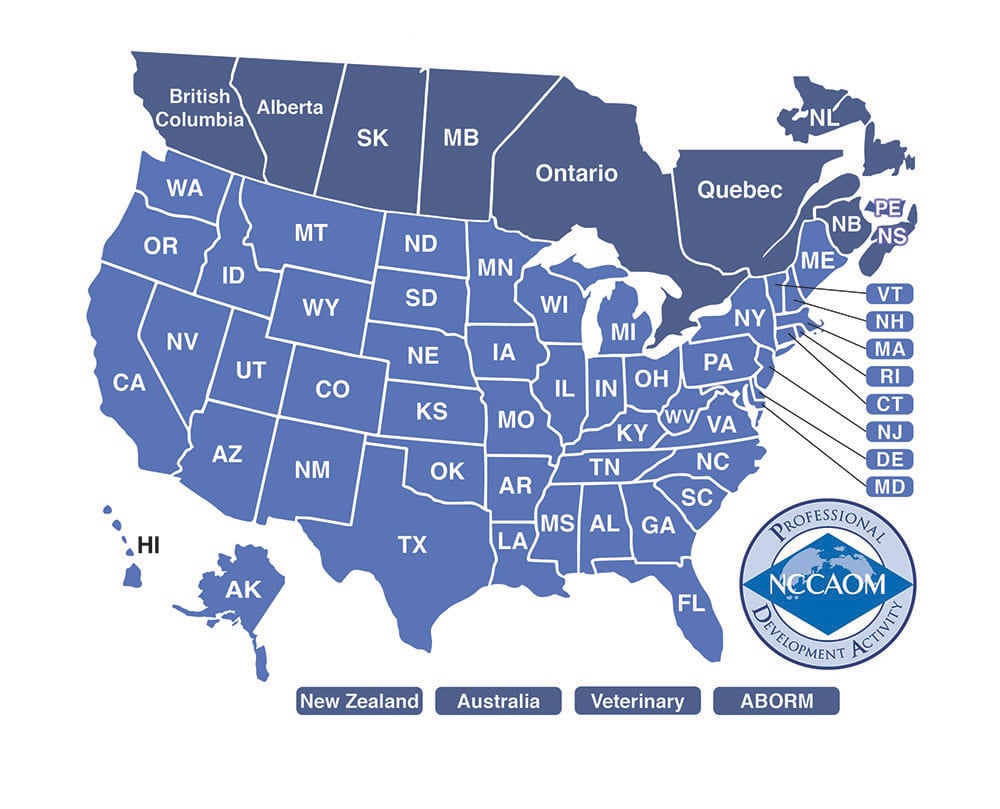Safety In Acupuncture
Pneumothorax Prevention #2
Samples of Course Materials
Sample:
Pneumothorax
Do not needle deeply over the lungs. Puncturing of the lungs causes pneumothorax, a collapsed or partially collapsed lung wherein there is air or gas in the pleural space. Accidental needling through the lung is iatrogenic pneumothorax, caused by a medical examination or procedure. This may be due to a biopsy or improper acupuncture needling technique.
Onset of pneumothorax is marked by sudden sharp chest pain, shortness of breath and an unproductive cough. Low blood pressure accompanied by more severe symptoms may also occur such as upper back pain, exhaustion and the patient may turn blue due to low oxygen levels. Mild pneumothorax may resolve without medical intervention. However, the only correct protocol if there is a pneumothorax is to make sure the patient is brought to an emergency medical facility immediately. Pneumothorax is a medical emergency. Severe cases may require surgery. Positive diagnosis is confirmed by X-Ray, CT scan or evaluation of arterial blood gases.
There are many points in common acupuncture practice that must be needled carefully to avoid pneumothorax. These points include the following:
- LU1, LU2
- ST11, ST12, ST13 ,ST14, ST15, ST16, ST17, ST18
- UB11, UB12, UB13, UB14, UB15
- UB41, UB42, UB43, UB44, UB45
- KI23, KI24, KI25, KI26, KI27
- GB21
More in Course Materials...
Sample:
Sample Case Studies of Pneumothorax from Acupuncture Treatment
Review of the Literature:
Fortunately, case studies of acupuncture induced pneumothorax in the United States are rare. Acupuncture Today1 noted that there are 8,000-9,000 cases of spontaneous pneumothorax reported annually in the United States.
In the same issue of the publication, a U.S. Acupuncture malpractice insurance based company reported a total of two cases in four years, one caused from a patient rolling over onto a needle placed in Lung 1.1
In A Cumulative Review of the Range and Incidence of Significant Adverse Events Associated With Acupuncture 2 in the United Kingdom it was found that In the hands of trained practitioners, the risk of serious adverse events with acupuncture is very low, estimated at 1:200,000, which is below that of many common medical treatments. The most common of the severe adverse effects are pneumothorax, injury to the central nervous system and infection. In the UK, the risk of pneumothorax after acupuncture has been estimated to occur twice in nearly a quarter of a million treatments. Less severe but more common side effects of acupuncture include dizziness, somnolence and redness around the needle site.
A prospective investigation in Germany of 97,733 patients constituting 760,000 treatment sessions reported that the two most frequently reported adverse events were needling pain (3.3 percent) and hematoma (3.2 percent). Potentially serious adverse events included two cases of pneumothorax.3
Complications are infrequently observed with acupuncture treatment; however, as with any form of needle use, adverse events can occur. These includes transmission of diseases, needle fragments left in the body, nerve damage, pneumothorax, pneumoperitoneum, organ puncture, cardiac tamponade and osteomyelitis. Local complications include bleeding, contact dermatitis, infection, pain and paraesthesia.3
The authors conclude that despite these documented complications and the occasional case reports, major adverse incidents are quite rare and are usually associated with poorly trained or unlicensed acupuncturists.3 And yet, it does happen. Let's look at how:
Case Study # 1
According to The Southern Medical Journal, a review of the literature from 1985 through 2007 shows nine cases of acupuncture-induced pneumothorax in the United States.4
In the case cited above, a 27 year old non-smoking woman began experiencing sharp chest pain, non-productive cough and difficulty breathing minutes after an acupuncture treatment for a muscle spasm of the right levator scapula.
In this treatment, needles had been placed along the medial border of the scapula from T-2 to T-8. A subsequent chest X-ray revealed a 30% collapse of the right lung. Because the woman was a medical student who lived 5 minutes from the hospital and could be trusted to adequately monitor her own symptoms, she was sent home to see if the pneumothorax would resolve on its own.
When her symptoms of chest pain, shortness of breath, and dry unproductive cough gradually worsened; she reported back to…
More in course materials…
Sample:
Approximate location of GB 21 along with inner and outer bladder points of the upper posterior thorax.
The following symptoms should be treated as signs of potential pneumothorax, especially if they are reported during or immediately after an acupuncture treatment involving points of the upper thoracic region:
- Sudden severe chest pain or upper thoracic pain
- Pain that worsens over time
- Chest pain worse with or causing non-productive cough
- Sudden unexplained shortness of breath or difficulty breathing
Points to Use With Caution
Pneumothorax due to acupuncture is rare. The pain, expense and potential complications of resultant medical intervention makes it imperative that all necessary precautions must be taken to prevent…
More in course materials...




